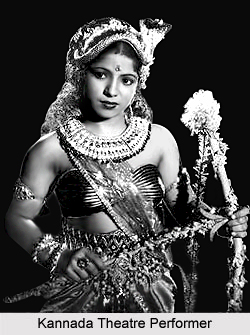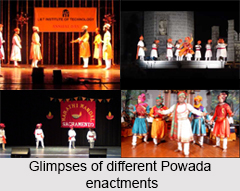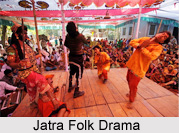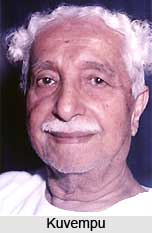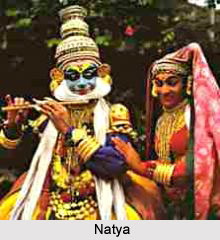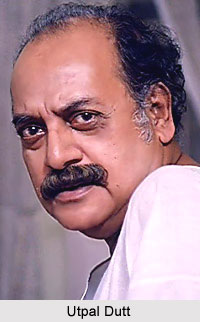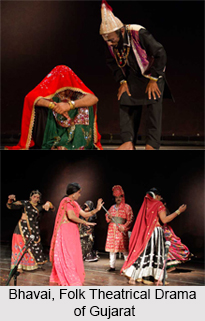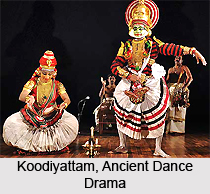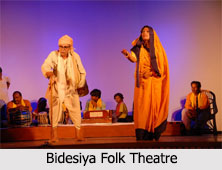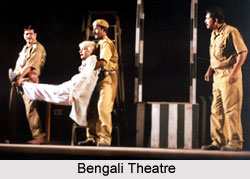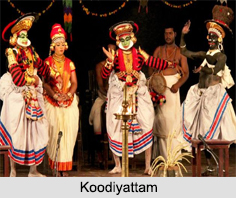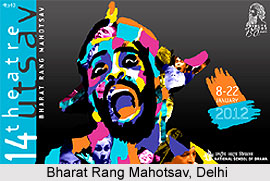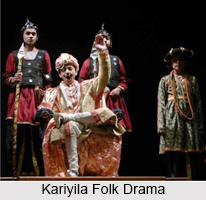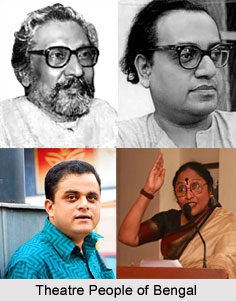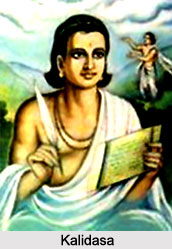 The Gupta period is regarded as the most flourishing period for the dramatic art. It was during this period that the great poet Kalidasa wrote his famous dramas, Malavikagnimitra, Vikramorvasiya and Abhijnanasakuntalam. Amongst these the last drama has been adjudged as one of the best among the existing dramatic literature. Another famous dramatist during this period was Visakhadatta. He was the author of the popular dramas Mudraraksasa and Devichandra-guptam. These dramas have also been regarded as fine examples of Sanskrit Literature. It may be said that most of the forms of art and religion reached to perfection, in this period.
The Gupta period is regarded as the most flourishing period for the dramatic art. It was during this period that the great poet Kalidasa wrote his famous dramas, Malavikagnimitra, Vikramorvasiya and Abhijnanasakuntalam. Amongst these the last drama has been adjudged as one of the best among the existing dramatic literature. Another famous dramatist during this period was Visakhadatta. He was the author of the popular dramas Mudraraksasa and Devichandra-guptam. These dramas have also been regarded as fine examples of Sanskrit Literature. It may be said that most of the forms of art and religion reached to perfection, in this period.
A detailed analysis reflects the impression of the enactment of dramas, the artists who took part in these dramas and the themes that were popular among the masses. The Harivamsa makes explicit reference to drama. The readers also learn about the players who produced a drama from the Ramayana legend. It makes direct mention of a dramatic treatment {natakivrtam) of the Ramayana. Lord Rama, Lakshmana, Bharata, and Satrughna, Risyasringa and Santa were personated by characteristically dressed actors.
Representation of some of the plays has also been found in some of the Puranas. In the Srimad Bhagavata Purana reference is made to actors. In Markandeya Purana one finds Rtadhvaja, son of king Sakrajit, keen towards dramatic performance.
Vatsyayana describes the recreations of citizens (nagaraka) and refers to the doings of Pithamarda, Vita, Vidusaka, Kun lavas etc. Natas appointed by the king were to play nataka in the temples of Saraswati on the days of parva. Natas who come from outside the state to stage plays were treated in the same manner as the natas of the place. The production of works like the dramas of Kalidasa and Visakhadatta presuppose the existence of high theatrical tradition in the Gupta period.
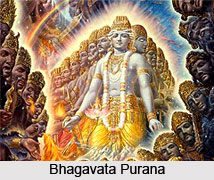 The Mudraraksasa refers to the historical characters like Chandragupta, the founder of the Maurya Empire and Chanakya, the prime minister of Chandragupta Maurya.
The Mudraraksasa refers to the historical characters like Chandragupta, the founder of the Maurya Empire and Chanakya, the prime minister of Chandragupta Maurya.
According to this drama the strategies were devised by Chanakya in over-throwing the Nanda`s rule. Chanakya had also guided the king to the greatest height of power. The drama centres on Raksasa, a former minister of the Nandas. He wished to overthrow Chandragupta Maurya and destroy Chanakya. While Raksasa weaves plots to end Chanakya and Chandragupta, Chanakaya counter-acts successfully.
Some of the passages of Devi-Chandraguptam of Visakhadatta has been preserved in the Sringaraprakasa of Bhoja, the Natya-darpana of Ramacandra and Guna-candra and the Nataka-laksana-Kosa of Sagaranandin. The drama is based on an interesting historical fact of the Gupta period. According to the drama Ramagupta, the son and successor of Samudragupta, having suffered a defeat at the hands of Saka king agrees to send his wife Dhruvadevi to him, which was not liked either by the queen or Chandragupta, the younger brother of Ramagupta. Candragupta devises a plan, goes himself to the Saka camp in the disguise of DhruvadevI and there kills the Saka king. Therefore, he pretends madness and enters the palace, kills Ramagupta and marries his widow.
Another famous drama of the Gupta period is the Kaumudi-Mahotsava written by Vajiika. The drama is based on historical facts. Sundaravarman, the ruler of Patliputra adopted a son named Chandasena. Chandasena was married to a Licchavi princess. During his old age when a son was born to Sundarvarman, Chandasena dethrones his adoptive father. The prime minister and the commander-in-chief of the ex-ruler try to re-instate his son Kalyanavarman. Eventually a revolt is stirred up by these two officers among the Sabaras and Pulindas on the frontiers of Magadha. While Chandasena was away with his army to subdue the revolt, Kalyanavarman, the son of Sundaravarman was summoned back to the capital and enthroned immediately. He was married to Kirtimati, the daughter of the Yadava king Kirti of Mathura.
According to the dramas of the Gupta period it is evident that the dramatists selected secular themes instead of religious ones. Earlier writers like Asvaghosha and Bhasa selected religious themes, but Kalidasa, Visakhadatta and Vajjika preferred historical and semi-historical characters.







